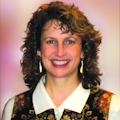Photonics West healthy despite ailing economy
SAN JOSE, CA--Amidst our ailing worldwide economy and SPIE’s (Bellingham, WA) observation from many at Photonics West 2009 (held January 24–29) that “flat is the new up,” SPIE official attendance figures for the event came in at 17,903 this year compared to 17,440 in 2008. Surprising considering the SPIE acknowledgment that companies did send fewer staff to man the exhibitor booths than in previous years, and considering that the 2009 Lasers & Photonics Marketplace Seminar (www.marketplaceseminar.com)--PennWell’s annual review of the laser markets--forecast an 11.3% drop overall in laser industry sales for 2009.
Corporate earnings for many photonics companies in the fourth quarter of 2008 have indeed showed signs of weakness, and the news is filled daily with reports of revenue and job losses in nearly all industrial and retail sectors. But many attendees at Photonics West seemed to ignore the obvious and instead, focused on the “bright spots” in the industry, including many “niche” opportunities in biomedical optics and solar-cell processing, as well as defense and security applications and the research and development markets.
In the “Executive Perspectives on the World of Optics and Photonics” executive panel held on Wednesday afternoon, CEOs and upper-level management from Hamamatsu, Trumpf, Edmund Optics, Newport, CVI Melles Griot, Coherent, and Bookham collectively said that today’s economy would no doubt bring about its share of consolidation (mergers more than acquisitions)--something that is badly needed in the telecom industry, but may also prove necessary for other ‘commodity’ photonics businesses. Bookham executive VP Ken Ibbs even said that now is an excellent time to start a new business provided you have funding, as resources are cheap and readily available. And because funding is not easy to obtain through venture-capital means or investors, Ibbs admits that customer-based funding will need to increase but only if a company offers a technology or product that a customer must have.
Edmund Optics’ CEO Robert Edmund pointed out that Warren Buffett has called this economic disaster the beginning of a new era of innovation, and nearly everyone on the panel agreed: Edmund sees technology leading us out of the current situation; senior director of strategic marketing for Newport, Randy Heyler, predicts the development of new corporate strategies such as working more closely with universities and academic institutions for new product ideas; CVI Melles Griot president and CEO Stuart Schoenmann noted that our aging population will continue to drive innovations in biomedical applications; Ibbs said that anything in photonics outside of the semiconductor industry is a bright spot and that necessity is the mother of invention; and Hamamatsu VP Ken Kaufmann feels that the new administration understands the long-term value of science--although this has yet to be proven.
Marketplace Seminar highlights upside
Even though Laser Focus World chief editor Steve Anderson said that the question is not how bad 2009 will be, but whether the laser industry will recover in 2010 in his opening address to attendees of the 2009 Lasers & Photonics Marketplace Seminar (held Monday, January 26 at San Jose’s Fairmont hotel), many attendees felt that the news was “not as bad as they were expecting.”
The Seminar officially forecast an 11.3% drop in laser industry revenues in 2009 to a level of $6.32 billion dollars (see www.laserfocusworld.com/articles/349353). And unfortunately, the assessment of the industrial laser markets from David Belforte, chief editor of Industrial Laser Solutions, were quantitatively even more dire now than in the official forecast presented at the seminar. Since early December 2008 (a month or so after the official forecast numbers were tallied), Belforte said that the industrial laser sector has been hit hard, prompting him to add “slivers of light” news stories on the ILS website to highlight successes in the industrial laser markets (see for example the Jan. 30 news posting at www.industrial-lasers.com entitled “Sliver of Light V: Illinois manufacturer invests in laser cutting technology”).
But the overwhelming sentiment of most of the presentations in the seminar was that when recovery occurs, the laser industry should experience continued growth, since no other technologies stand to displace the inroads that lasers have made in biomedical, defense, materials and microelectronics processing, entertainment and displays, and research and instrumentation markets. In fact, the Technology Forum on Green Photonics, chaired by Michael Lebby, president and CEO of the Optoelectronics Industry Development Association (OIDA), pointed out that photonics is uniquely poised to deliver “green” solutions to address the potential 50% increase in the global demand for electricity by the year 2025. And these green solutions go beyond the obvious photovoltaic technologies and solid-state lighting advances into the use of light detection and ranging (LIDAR) for wind-turbine optimization to Bragg grating optical sensors for improved downhole oil extraction.
The Green Photonics Technology Forum included presentations from Eric Takeuchi, director of business development at Daylight Solutions, who envisions photonic sensors in compact, field portable packages deployed in a “citizens as sensor” role in which a collective group of individuals use those sensors to provide local monitoring of environmental gases and pollutants, for example, within a community. Takeuchi feels passionately that photonics can provide the means to understand the scope of an environmental issue, because only change can come through a true understanding of the problem at hand. It also included a presentation by Robert Steele, director, optoelectronics research at Strategies Unlimited. Steele says that even though lighting only made up roughly 7% of the $4.6 billion dollar high-brightness light-emitting diode (HB LED) market in 2007, solid-state lighting is growing at nearly 40% per year and represents a huge opportunity for the photonics industry. And even though the economy is in the tank, Steele says that the solid-state lighting market may slow, but it won’t go negative--a nice note to end on considering the otherwise gloomy laser industry scenario.
Next year’s Lasers & Photonics Marketplace Seminar will be held on Monday, January 25th, in San Francisco (see www.marketplaceseminar.com). And please visit the VIDEO player on the Laser Focus World website at www.laserfocusworld.com to view a video overview of this year’s Marketplace Seminar, as well as several overall Photonics West reviews.
BiOS dominates
A packed hot topics session on Saturday night from 7 to 9 pm was the best indicator that the BiOS Symposium dominated the technical conferences at Photonics West 2009. The quantity of technical papers in the BiOS symposium--more than 1600 papers--represented nearly half of all the papers presented at Photonics West 2009, which included the BiOS, LASE, OPTO, and MOEMS/MEMS Symposia.
BiOS was organized into five tracks including Photonic Therapeutics and Diagnostics; Clinical Technologies and Systems; Tissue Optics, Laser-Tissue Interaction, and Tissue Engineering; Biomedical Spectroscopy, Microscopy, and Imaging; and Nano/Biophotonics. The hot topics session covered nanoscopy with far-field optics (Stefan Hell from the Max-Planck-Institut fur Biophysikalische Chemi), studies in poration that use lasers to open cells for insertion of DNA or other molecules (Kishan Dholakia from the University of St. Andrews), to tracking stem cells in vivo (Charles Lin from the Wellman Center for Photomedicine, Massachusetts General Hospital and Harvard Medical School), OCT and fluorescence spectroscopy for cancer detection (Jennifer Barton from the University of Arizona), and biodegradable silk optics (Fiorenzo Omenetto from Tufts University; see www.laserfocusworld.com/articles/345201).
Sales in the biomedical optics sector will not fare as poorly as the overall laser industry: the Lasers and Photonics Marketplace Seminar said that when all the 2008 numbers are in, the biomedical therapy market will reveal a decline of approximately 5% from 2007 levels, and 2009 figures will decline a bit further to $477 million in sales.
In the BiOS exhibit hall, a couple of vendors claimed unique capabilities: Innolume said its quantum dot technology exploits wavelengths that nobody else touches--in the 1120–1210 nm range (Innolume covers a wider spread from 1064–1320 nm, but other companies have offerings at either end of that range); Translume is using lasers to produce glass waveguides and other microstructures such as microfluidic channels; Michelson Diagnostics demonstrated its handheld optical coherence tomography (OCT) probe for imaging skin and plans to attend or exhibit at dermatology events in 2009; and Kapteyn Murnane Laboratories (KMLabs for short), which develops low-cost ultrafast amplifier systems to compete with some of the larger developers, said it shortly plans to introduce a new device about half the size of its current systems.
More new products
For details on new products announced at Photonics West from KLA-Tencor, Alfalight, Multiwave Photonics, Luna Technologies, nLIGHT Corporation, Calmar Laser, Amplitude Systemes, Bookham New Focus, and Schott, see “Sinking economy can’t stop new product innovation at Photonics West” at www.laserfocusworld.com/articles/351820. And watch upcoming issues of Optoelectronics Report for more details on Photonics West.
About the Author

Barbara Gefvert
Editor-in-Chief, BioOptics World (2008-2020)
Barbara G. Gefvert has been a science and technology editor and writer since 1987, and served as editor in chief on multiple publications, including Sensors magazine for nearly a decade.

Gail Overton
Senior Editor (2004-2020)
Gail has more than 30 years of engineering, marketing, product management, and editorial experience in the photonics and optical communications industry. Before joining the staff at Laser Focus World in 2004, she held many product management and product marketing roles in the fiber-optics industry, most notably at Hughes (El Segundo, CA), GTE Labs (Waltham, MA), Corning (Corning, NY), Photon Kinetics (Beaverton, OR), and Newport Corporation (Irvine, CA). During her marketing career, Gail published articles in WDM Solutions and Sensors magazine and traveled internationally to conduct product and sales training. Gail received her BS degree in physics, with an emphasis in optics, from San Diego State University in San Diego, CA in May 1986.